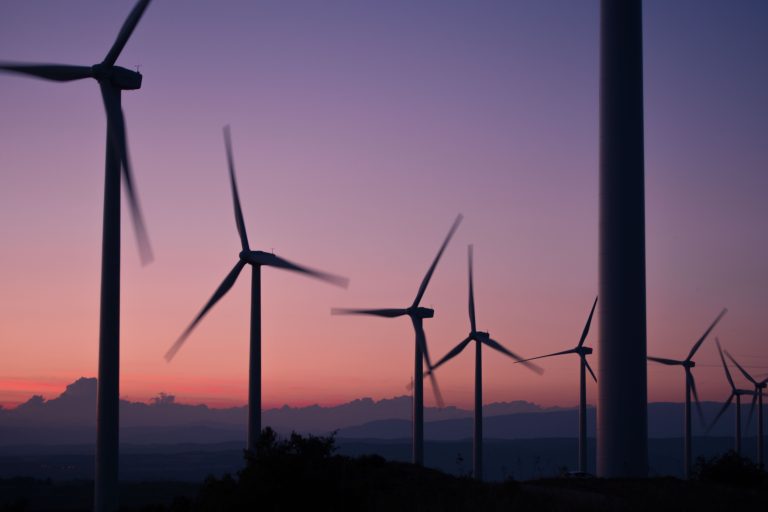This curated reading list comprises the discoveries of undergraduate history students Megan Phillips and Katie Dawson from the University of Reading. Their assignment involved locating and summarizing key archival and library texts, specifically those pertaining to British Wind and Water Power during the 1970s and 1980s.
The writings are sorted into five sections, outlining various perspectives from the period on the subject. Click on each section heading to find out more.
This reading list is part of a larger education pack that can be found here.
To book an appointment to visit our library and use these texts, email our Information and Engagement Manager at rachel.riddell@millsarchive.org.

Past, Present and Future
Musgrove’s 1978 pamphlet provides comprehensive insights into his perspective on wind energy, covering systems in the UK and their economic aspects. He emphasizes offshore wind farms over hilltop installations. Dallas’s 1970 book delves into the historical and industrial aspects of water power, focusing on traditional usage and its connection to industries like wool and mining. Musgrove’s 2010 book traces wind power’s history, detailing its growth since the 1970s and assessing its impact on European countries. The book explores turbine types, reviews successes, and discusses future prospects, addressing both criticisms and optimistic views on wind energy’s environmental and economic benefits. Together, these publications offer a rich exploration of wind and water power.
Science, Engineering & Technology
Saunders, in “Energy Primer,” details small hydro-plants for individuals and communities, addressing costs, environmental impact, and technical aspects. Cheremisinoff’s “Fundamentals of Wind Energy” explores wind power’s potential, discussing advantages, disadvantages, and socio-economic considerations. A more basic guide, “Water Power – How it Works” by Howard, explains waterwheel and turbine systems, targeting beginners with clear illustrations and a focus on efficiency and environmental impact. Davidson’s article in “Windpower Monthly” debates experts’ views on wind turbines and earthquake resistance, highlighting the uncertainty surrounding their ability to withstand seismic waves. These publications collectively provide diverse insights into water and wind power, covering technicalities, environmental considerations, and societal aspects.
Political Matters
The “Energy Policy” Green Paper by Tony Benn (1978) presents a comprehensive overview of the UK’s energy landscape, analyzing consumption, environmental impact, and proposing strategies. Torgny Møller’s study (1985) explores the positive economic impact of wind power on Denmark, emphasizing employment benefits and financial savings. In Ros Davidson’s article (1987), clashes between wind power and public opposition are examined, addressing concerns of environmentalists and residents, highlighting the need for realistic perspectives. The “Small-Scale Hydropower” statement (1995) from the Environment Agency assesses legal, environmental, and economic aspects, supporting the government’s emission reduction goals while emphasizing community benefits. Together, these publications offer insights into energy policies, renewables, and public perceptions over time.
Community
The Mills Archive Trust’s pamphlet “Water Power” explores the potential benefits and challenges of harnessing local water courses for rural workers. It discusses the initial costs, types of wheels and turbines, technical steps, and pitfalls of transmission and inefficiency. Musgrove’s 1984 report evaluates wind energy globally, summarizing turbine characteristics, potential impacts, and detailing European countries’ involvement. Lee Johnson’s 1977 article argues for “Wise-Wind,” emphasizing appropriate technology for clean energy. Windmills, deemed suitable, offer employment opportunities, health benefits, and cost advantages compared to non-renewable sources. Together, these publications provide insights into water and wind energy, reflecting on economic, environmental, and technological considerations.
Nature or Nurture?
An article by Møller and Poulsen investigate potential conflicts between Wind Energy Conversion Systems (WECS) and bird life in Denmark. The study finds little overall effect on bird populations but notes potential conflicts under special circumstances. The article discusses birds’ reactions to WECS, human activity as a disturbance, and the absence of recorded bird deaths due to collisions. A protest against a WECS installation is briefly mentioned. Another article by Møller recounts a dramatic incident of lightning striking a wind turbine blade near Copenhagen, destroying it. The report highlights the rare occurrence of lightning strikes on windmill blades and preventive measures against electrical damage. Together, these articles offer insights into environmental concerns and challenges associated with wind energy in the 1980s.

